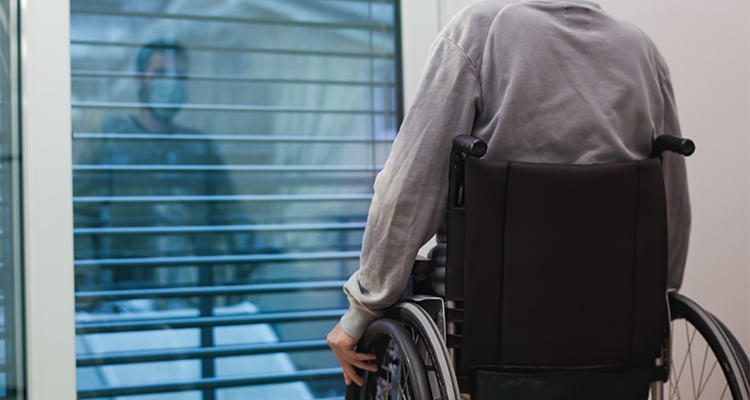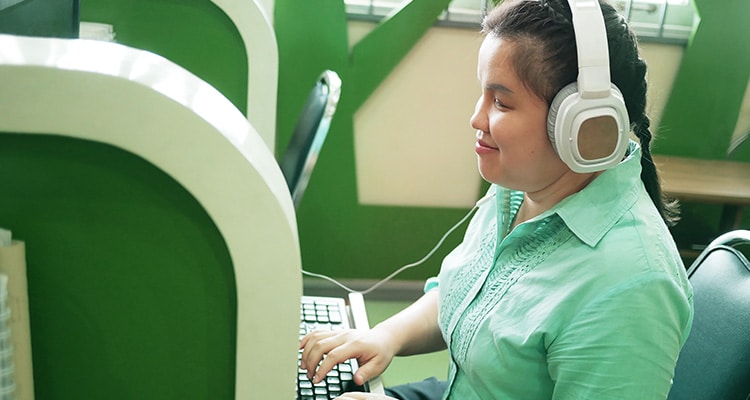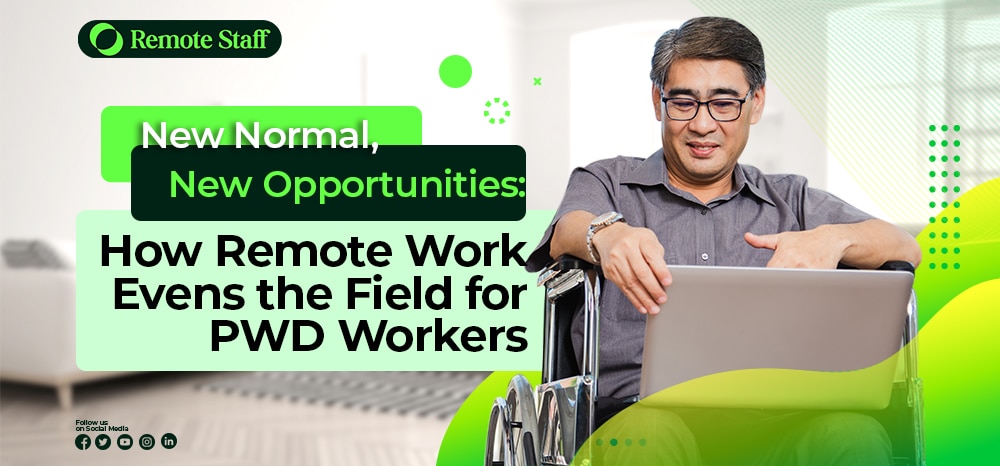“We’re all in this together.” I believe we’ve all seen this smarmy “feel good” quote that has been floating around social media ever since the pandemic started. Unfortunately, reality is often disappointing. Not all of us have the same opportunities as more privileged people do. As traditional jobs remain scarce, many are now turning to remote work for employment.
Amongst these people turning to remote work are persons with disabilities. Despite what many would assume, home-based jobs for PWDs aren’t scarce. In fact, there seems to be an increase in employment opportunities for PWDs at present.
An increase in job opportunities has been something PWD workers have been hoping for for a long time. Because of the limitations of traditional work for them, this increase in possibilities has been a godsend for them. In this article, I will discuss how remote work is giving more work opportunities for PWD workers.

Remote Work is More Accessible for PWD Workers
One of the main limiting factors as to why they’re having trouble working in a traditional setting is the inaccessibility of their prospective workplace for them. But with remote work, this is not anymore a problem. Remote work allows PWD workers to use their existing setups at home for work.
For example, not all office buildings in our country have special facilities to accommodate workers who require a wheelchair to move around. This limitation would’ve limited the ability of an aspiring wheelchair user to work efficiently in the office, no matter how qualified and competent they are for the job.
With remote work, they could use the facilities in their homes to work efficiently instead. This setup allows them to work at their own pace and contribute more to the company.

Remote Work Helps Lessen the Stigma Against PWD Workers
Let’s face it; not all companies are keen on hiring PWD workers. This stigma against PWD workers stems from a variety of reasons. These range from not wanting to spend on facilities for them to thinking they’re not equal to regular workers. These companies couldn’t see past their conditions and see their skills and what they could offer for the company.
But with the increase of home-based jobs for PWDs, this stigma is now slowly losing traction. These new opportunities show that persons with disabilities are just as capable of work as regular people. Also, because many people are now remote working, PWD workers won’t feel alienated from them.

PWD Workers Won’t Need to Commute That Much Anymore
Yes, this applies to everyone. But being able to avoid the hassles of commuting is of greater significance for PWD workers. Even without the threat of covid, they’re having difficulty going to work and back home every day. Not just that, but commuting could even be a health concern for some PWD workers as well.
An example that comes to mind is that of visually impaired workers. But other persons with disabilities may be placed at risk when commuting to work as well. An example of this is people who experience sensory overload. With a work from home job, they can avoid this risk from interfering with their ability to work and focus on their tasks instead.

Being Employed Online Boosts A PWD Worker’s Confidence in Themselves
I might be speaking from experience on this one, but being employed, especially right now, has given me a boost of self-confidence. The pandemic has both been a difficult challenge and an opportunity for PWD workers to show what they can do to the world. Many PWDs eagerly took this opportunity and are now proving themselves as equal to their regular coworkers.
With this opening of newer opportunities, it wouldn’t be hard to imagine the next step would be including PWD workers in a traditional setup once the pandemic’s over. And with their experience working from home, PWD workers will be a lot more confident in their skills when applying for office-based jobs.

Remote Work is Open for All
Though plenty of doors have closed due to the pandemic, several more have opened for PWD workers. With remote work, they have found a way to balance their physical needs while supporting their families. Using modern technology for work, persons with disabilities prove that their disabilities won’t dictate their lives.
Despite these advances, there is still a long way to go until we reach full inclusion for all in the country, but it’s a start. So we shouldn’t rest on our laurels just yet.

